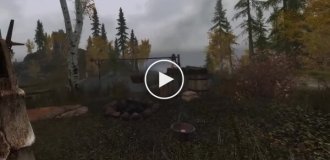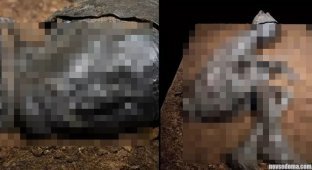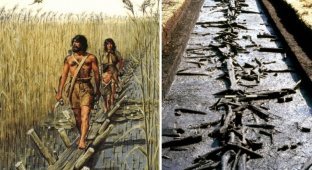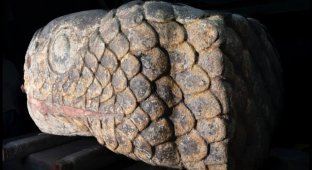Time froze on this man's face, despite the fact that he already 2300 years! (7 photos)
This ancient mummy was found on May 8, 1950 in Denmark and, thanks to its amazing preservation, has become one of the most famous archaeological finds. 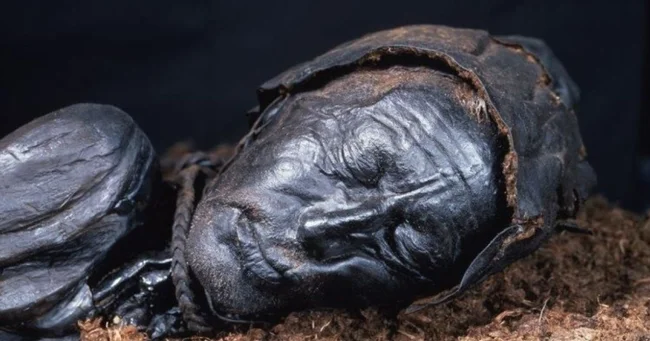
Source Yandex Images.
Imagine: workers were digging peat in the Bjeldskovdal bog when they suddenly came across a corpse. They were sure that it was a recently killed person, so fresh did the body look. But in fact, this body is more than two thousand years old! The man was lying in peat at a depth of 2.5 meters, his pose reminiscent of an embryo - as if he was sleeping. He was wearing a simple sheepskin hat, tightly sitting on his head thanks to a strap under the chin. Apart from a leather belt, there was no other clothing - everything had rotted away over the long years of being in the swamp. 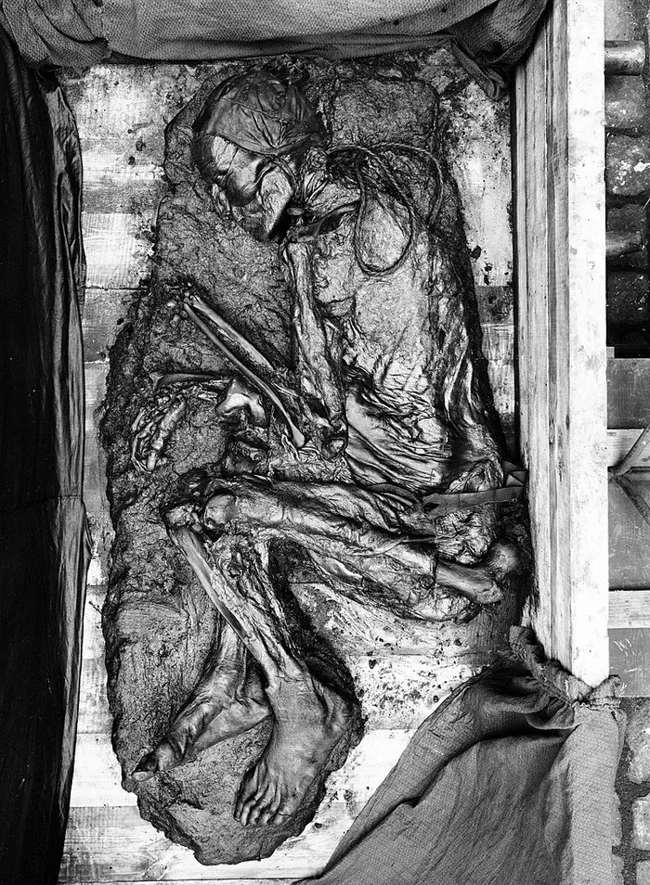
Source Yandex Images.
A noose of woven leather was tightly tied around the man's neck, which immediately led the researchers to the idea of a violent death. Radiocarbon analysis showed that the man lived between 375 and 210 BC, and his age was about 40 years. He was short by our modern standards - only 1.61 meters tall, which, however, was the norm for people of that time.
How was the body preserved? 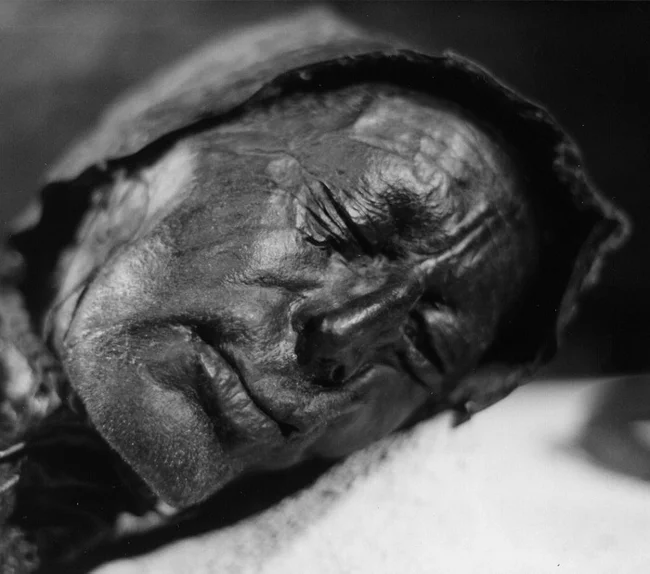
Source Yandex Images.
One of the most interesting aspects of the Tollund mummy is its state of preservation. Peat bogs have unique properties for preserving organic matter. Acids, low temperatures and lack of oxygen create ideal conditions in which the bodies do not decompose.
Thanks to this, the skin, internal organs and even facial features of the ancient man remained surprisingly well preserved. The body of the mummies in the swamps is soaked in tannins (natural preservatives), which helped to preserve such important details. The head and face of the man look as if he died just a few days ago.
Causes of death: sacrifice or execution? 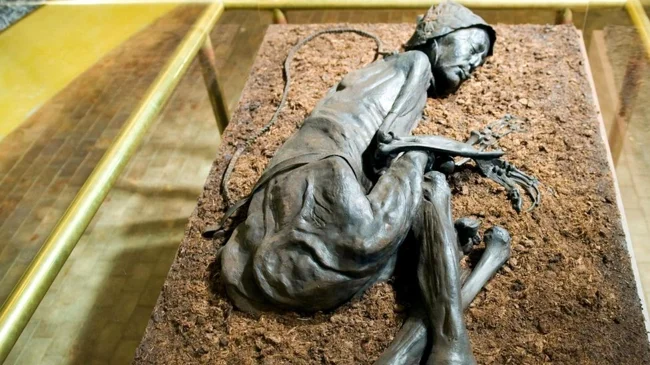
Source Yandex Images.
What happened to the Tollund Man? The obvious noose around his neck raises the question - was he executed or sacrificed? Some scholars believe he may have been hanged as a sacrifice to the gods, as this was a common practice in Iron Age Europe. Such rituals were believed to help appease the forces of nature or the gods, especially during times of crop failure or other disasters.
Other researchers favor the execution version. The rope left furrows in the skin under the chin, but there were no marks on the neck where the knot of the noose would normally be, which could indicate a more ritualistic nature of the death. Although the cervical vertebrae were intact, the swollen tongue revealed in the X-ray confirms death by hanging. The pose of the body also speaks against the execution version - it was carefully laid out, the man's eyes and mouth were closed, which is unusual for executed criminals.
His last meal. 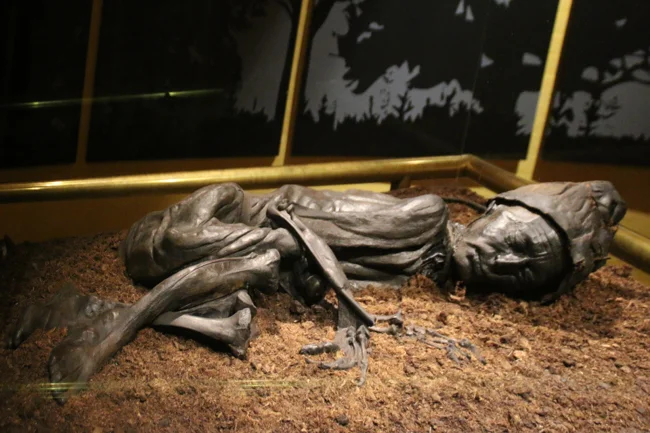
Source Yandex Pictures.
Scientists were able to find out what the Tollund man ate before his death. It was porridge from the seeds of cultivated and wild plants, such as barley and flax. Surprisingly, neither meat nor fresh fruit was found in his stomach, which gave researchers reason to assume that his death occurred in the winter or early spring, when such products were not in abundance. The last time he ate was no less than 12 hours before his death.
What was left of the body? 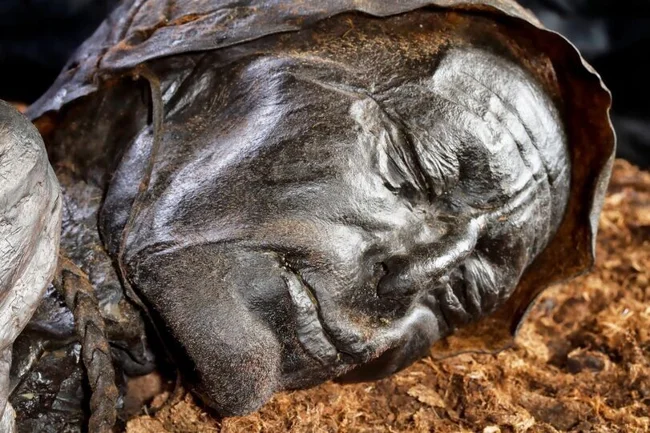
Source Yandex Images.
Unfortunately, due to the insufficient level of conservation in the mid-20th century, when the find was made, only the head of the body has survived to this day. The rest was reconstructed from the skeleton and is now on display at the Silkeborg Museum in Denmark. Although preservation techniques were not yet so advanced at the time, the head itself is so well preserved that we can examine its features in detail. 
This is what the forensic scientist believes this man looked like in life. Source: Yandex Pictures.
Such mummies provide a unique opportunity to look into the past and shed light on secrets that could otherwise remain hidden forever.
Findings like the Tollund Man remind us that history is not always on the surface. Sometimes it hides deep underground, waiting for its moment to tell the world new stories about ancient times.









